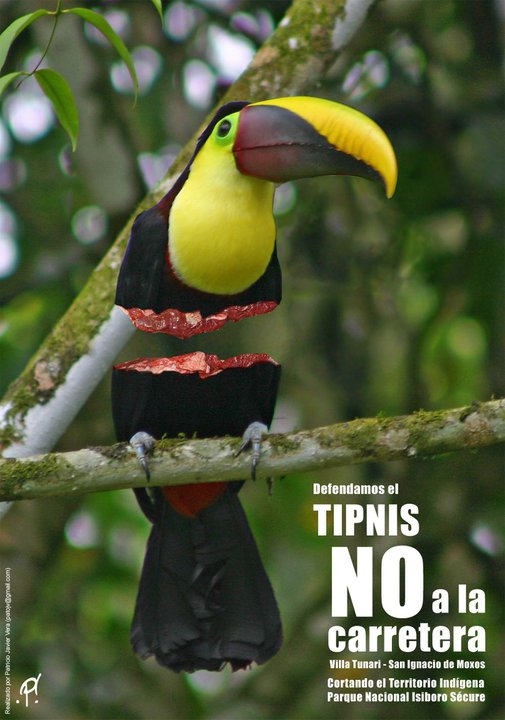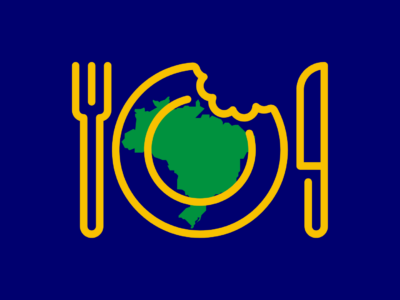Este post faz parte de nossa cobertura especial Direitos Indígenas e Floresta em Foco: Amazônia.
Continua em marcha a caminhada de protesto indígena em prol da interrupção da construção da rodovia que irá cruzar o TIPNIS [en], Território Indígena e Parque Nacional Isiboro Sécure [en], como noticiado previamente [en] pelo Global Voices.
No blog Bolivia Diary [en], Dario Kenner explica o conflito em profundidade e escreve sobre as condições enfrentadas pelos manifestantes:
Despite the indigenous peoples spending over a month marching, including with children and elderly people (there is a 99 year old marching!), in very difficult conditions and without proper supplies it is clear they are determined to reach an agreement that they feel will defend their rights and territory. For them this means the highway not going through the TIPNIS. It is surprising the Bolivian government has let the conflict go on this long because each day the issue generates more controversy which includes international petitions [en].

"Vamos defender TIPNIS. NÃO para a rodovia; Cartaz de Patricio Javier Vera, usado com sua permissão.
Dario vai em frente e relata sobre a situação atual:
There are still over 250 kilometres to go out of the total 500+ kilometres. There is currently a highly tense standoff due to a blockade which has been set up in Yucumo [en] and the presence of 400 police who are stopping the marchers from advancing. An important rural social movement, the Confederation of Intercultural Communities of Bolivia (CSCIB), have been blockading in support of the highway and to demand the removal of five of the marcher’s demands (see full set of demands in part 2) and that the marchers dialogue with the government. This last point does not make sense because the very aim of the march is to get to La Paz and dialogue with the government. Everyone is praying there will not be any violent clashes, but the members of CSCIB who have been maintaining this blockade in Yucumo for over two weeks have threatened to stop the march from progressing – even though the indigenous march is peaceful and is not obstructing the road.
A Polícia interrompeu a marcha e bloqueou a rodovia para La Paz, a capital da Bolívia, por razões de segurança, mas qualquer outra explicação não foi dada. Isto, entretanto, não impediu todas as manifestações. Como relatado pela Bolivia Weekly [en]:
A counter march of 300 people aligned with the government set off dynamite 200 meters away. The was was blocked yesterday [September 20] by 200 national police directed by Government Ministry official Boris Villena. Vice President Alvaro Garcia Linera said that the marchers could come negotiate in San Borja and justified blocking the tribal marchers because their demands would hurt families who squat on jungle lands.
Um abaixo-assinado dirigido ao presidente boliviano Evo Morales para Parar a Destruição da Amazônia [en] está ganhando apoio internacional. Há especulação de referência a lesões, conforme texto do advogado Americo Romero M. (@americorom):
3 heridos Naranjal y 1 herido o fallecido dan diferente informacion en urundaiti…es confusa la informacion.
No entanto, @sobre el_TIPNIS) relatou por último:
La situación en Yucumo ha mejorado un poco. El agua de la solidaridad de la gente ya llega a los y las marchistas. Gracias
Você pode ler sobre outras reações e relatos no Twitter sob o hashtag #TIPNIS.
Este post faz parte de nossa cobertura especial Direitos Indígenas e Floresta em Foco: Amazônia.






